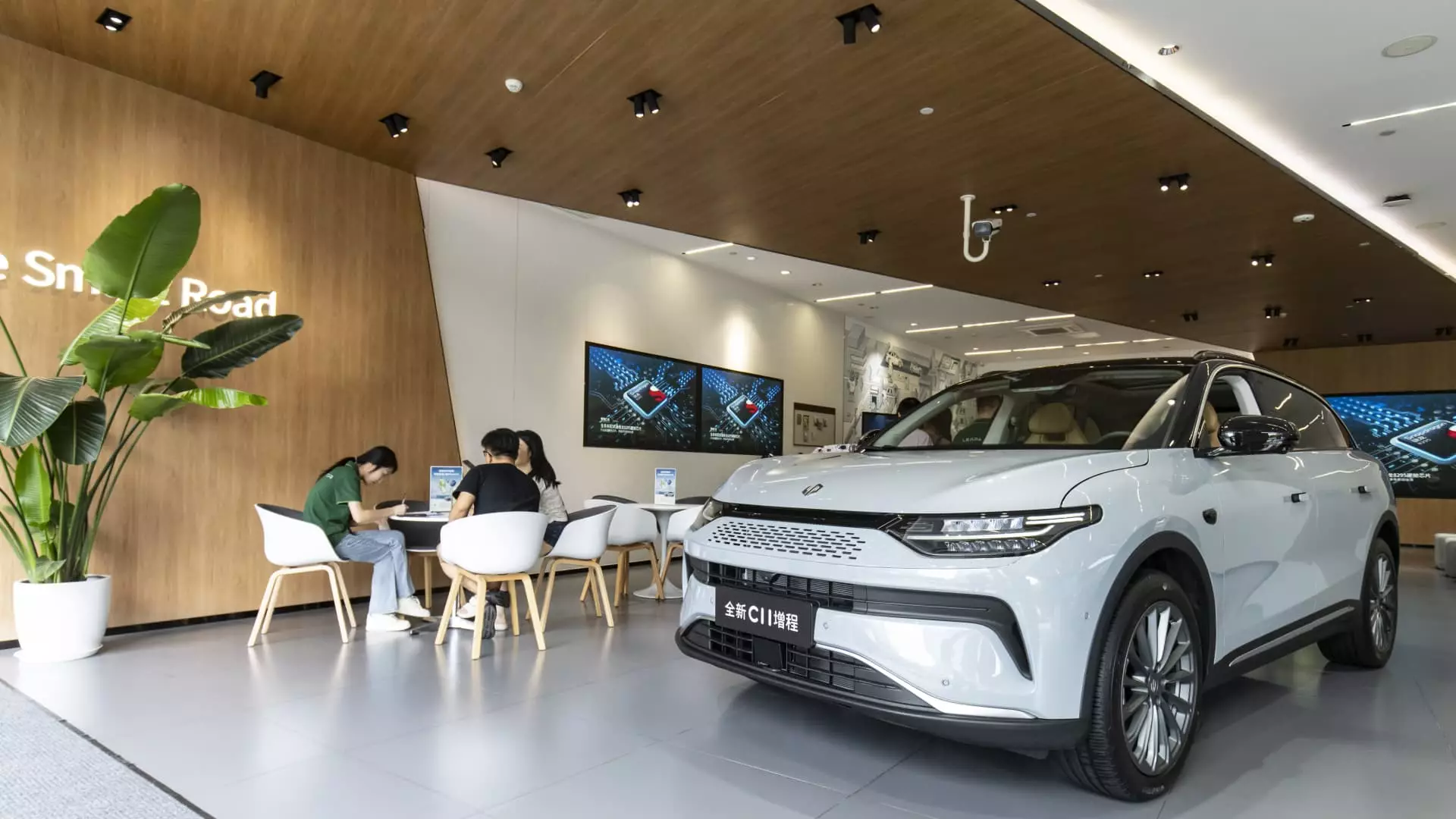China’s automotive market is experiencing a significant transformation, with hybrid-powered vehicles rapidly gaining ground over traditional gasoline-only cars and even pure battery-electric vehicles (BEVs). The data suggests a pivotal moment in consumer preferences, as more Chinese drivers opt for the versatility and efficiency of hybrids. In 2024, BYD, the nation’s leading automotive manufacturer, recorded impressive sales figures, with approximately 4.3 million passenger vehicles sold, of which nearly 2.5 million were hybrids. This shift indicates evolving attitudes toward sustainable transportation solutions as consumers increasingly seek alternatives to conventional fuel sources.
The prominence of BYD as a market leader is noteworthy, especially considering its remarkable turnaround from 2023 when hybrid sales lagged behind those of battery-only vehicles. The company’s strategic focus on hybrid technology appears to have paid off, positioning it favorably against competitors. Tesla continues to be a significant player in the battery-only segment, with projections estimating over 600,000 vehicle sales in China for the second consecutive year. While Tesla’s growth remains robust, it’s evident that the landscape is shifting, with hybrid vehicles gaining traction among consumers who prioritize flexibility in driving range and fueling options.
Li Auto is another notable competitor that has made strides in the hybrid market, boasting a record 500,508 vehicle deliveries in 2024. Their approach of integrating fuel tanks to extend driving ranges caters to the desires of consumers who may still have apprehensions about fully electric vehicles. On the other hand, traditional electric car startups like Nio, Xpeng, and Zeekr are now facing increased competition and a more challenging market environment, signaling that the narrative surrounding electric mobility is evolving rapidly.
The data from various car manufacturers underscores an important trend: hybrid vehicles are becoming increasingly attractive in the face of a competitive electric vehicle landscape. Notably, newly emerging players, such as Xiaomi, have entered the market, launching their own electric sedan, the SU7. Their ambitious target to deliver 300,000 vehicles by 2025 illustrates the growing diversity in the market, and the potential for hybrid options to appeal to consumers who favor a mix of electric and gasoline capabilities.
As Chinese consumers become more discerning about their vehicle choices, the initial excitement around fully electric cars is beginning to coexist with a realization of the practical benefits of hybrids. The strategic readiness of established manufacturers to innovate and introduce hybrid models may play a crucial role in commanding consumer attention amid intensifying competition.
The continuous rise of hybrid and electric vehicles in China can be attributed significantly to government policies aimed at encouraging the adoption of new energy vehicles (NEVs). Recent statistics reveal that in July 2023, NEVs accounted for over 50% of passenger car sales, a remarkable increase from a mere 36% just six months prior. This surge in demand can be traced back to various supportive initiatives implemented by the Chinese government, including subsidies and easier access to licensing.
Local governments, particularly in metropolitan areas such as Beijing, are making strides to facilitate the licensing process for NEVs, making it significantly easier for residents to navigate the complexities of ownership. Such moves are part of a broader strategy to elevate domestic automotive players and reduce reliance on foreign automobile brands, fostering a nurturing environment for local innovation in the automotive sector.
As China moves towards a more sustainable future, the rise of hybrid vehicles marks a defining moment in its automotive evolution. With consumer preferences shifting and government backing reinforcing this transition, the automotive landscape is set to witness continued growth in hybrid technologies. BYD, Tesla, Li Auto, and other innovators are forging ahead in a market ripe with potential, revealing not only a shift in driving needs but also a broader commitment to sustainable mobility solutions. The convergence of consumer behavior, competitive dynamics, and supportive policies indicates that hybrids are not just a passing trend but a significant player in the future of transportation in China.

